How to "Live Life Strong", Seth Munsey interview
By Adrienne Harvey, SrPCC, RKC-II, CK-FMS
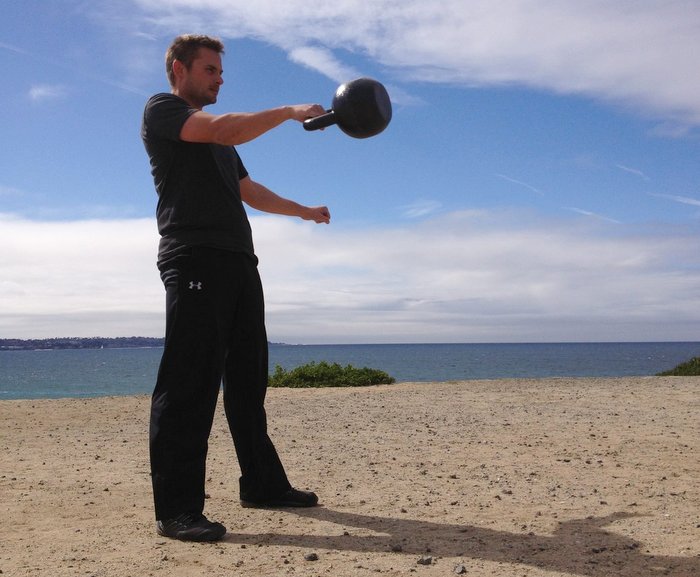
Dragon Door: How did you become involved with sports and fitness?
Seth Munsey: I wasn't involved with traditional sports, but when I was in high school I worked in a surf and skate shop. I spent most of my time surfing, snowboarding, and skateboarding, so I was very active.
I went to boot camp right after I turned 18. I was a pretty skinny guy at the time. Even though I did cross country my freshman and sophomore year in high school, I hadn’t really done any strength training. In the Coast Guard we did workouts, but it wasn’t the main focus. I was in a naturally lean stage and active all the time out on the water with my job duties.
Dragon Door: When did you become an EMT, and how did you make that decision?
Seth Munsey: In 2003. My role in the Coast Guard was search and rescue and federal law enforcement. So, I had already done some of the same tasks as an EMT in the Coast Guard. After the Coast Guard, my goal was to join the fire department. I went to the firefighting academy, then started working on an ambulance answering 911 calls for the next six years. At the same time, I was also working as a part time firefighter.
On an ambulance, you work two to three 24-hour shifts a week. It’s a very stressful job—we’re up in the middle of the night, adrenaline is high and I was eating horrible food. I went from 165lb to about 210lb. I started having health and digestive issues during my time on the ambulance. Because we couldn’t predict when we would get a call, I would eat roughly 10-15 times a day. But when I got married, I realized I was getting older and my shot at getting hired as a firefighter was decreasing. I would also need to pass the physical test to get hired. So, while I was still working on the ambulance, I started eating healthier, and worked out with bodyweight exercises at the station. I went from 210 to 170 in about four months. Knowing what I do now, I would have lost the weight more gradually, but I did it the only way I knew at the time.
Once I lost the weight, I desperately wanted to get off the ambulance. I didn’t know what I wanted to do next, and a friend told me that 24hr Fitness was hiring
personal trainers. Even though I’d never had a job in the fitness industry, I studied for my first fitness certification while I was on the ambulance, then started working at 24hr Fitness. During that same time, I also decided to go to college. Throughout high school I had been a horrible student—I graduated with the lowest possible passing GPA. But, the military really forced me to grow up, so when I went back to college at age 28, I got my degree in Kinesiology and it changed my life.
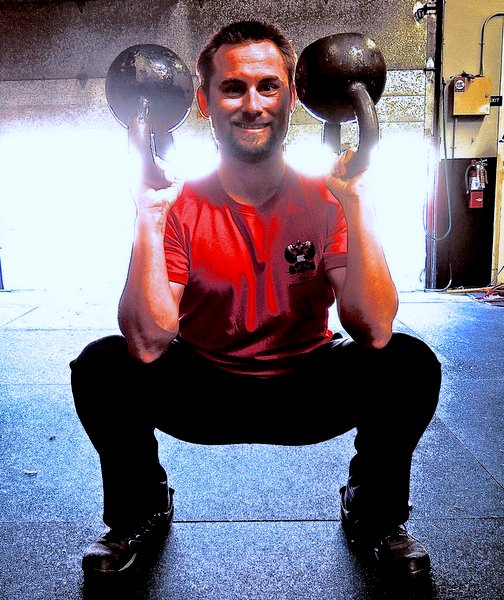
Dragon Door: Was the shift towards a fitness career your inspiration to go to college?
Seth Munsey: When I started at 24hr Fitness, a guy took me under his wing. He had a Kinesiology degree, and recommended various authors and online forums that I should read. He also introduced me to
kettlebell training. He would bring a few kettlebells to the gym for his clients. I didn’t really know what to do with them, but I used them a few times. Little did I know they would eventually be a big part of my life. I also started to have conversations with coaches and visit other gyms—this developing my desire to be a coach.
Dragon Door: How did you first learn about kettlebells?
Seth Munsey: During my senior year at Cal State Fullerton, I went to the Perform Better Summit in Long Beach. And I would always go to San Diego to volunteer as a "victim" for
Dragon Door workshops, so I could get free kettlebell lessons. I’m always seeking out new ways to develop myself—personally and professionally.
After one of the Perform Better summits, I ended up at a bar sitting next to the strength coach for the Anaheim Ducks, a professional hockey team. Soon after, I began working as a strength coach intern for the Ducks for the next year and a half. While I was working with their strength coach, I learned how the athletes were using kettlebells. He also told me that the RKC was one of the best learning experiences he ever had—and that I must do it. I first went through the
RKC in February, 2013.
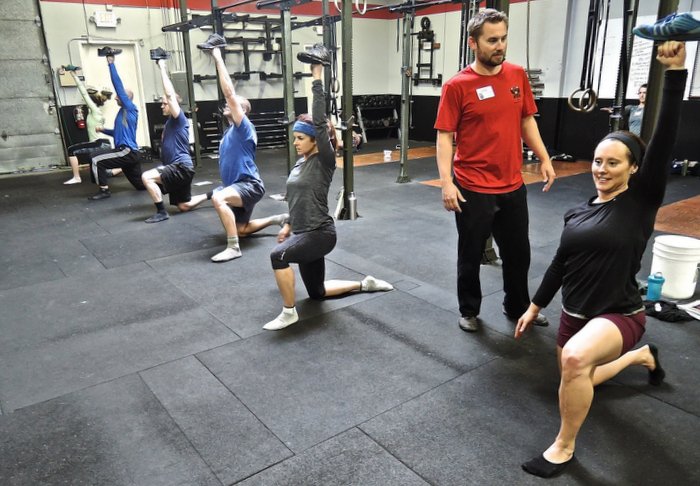
Dragon Door: What kind of training did you do with the Ducks?
Seth Munsey: During the seasons, our training included half Turkish get-ups, quarter getups, kettlebell swings, and half-kneeling presses. In the off-season, we trained a lot more in depth with kettlebell training, including full Turkish get-ups, kettlebell swings, along with all the other training. But, kettlebells were a big part of our training—and in-season, they formed a large majority of it. The guys liked the
kettlebells, especially when they’d been bent over or slouched forward for most of a game. Teaching them the hip-hinge, how to brace at the top of the swing, and how to engage their cores for the half kneeling presses and get-ups was a great experience.
Dragon Door: What inspired you to start your own gym?
Seth Munsey: I wanted to train everyday athletes—everyday people. We moved to Monterey and I opened my own facility in April 2013. It’s for the 97% of people who are nervous about going to the gym, or don’t see themselves as "gym-goers"—people who want to exercise for their health. After my RKC, I knew that what I learned would play a big role at my own facility. We only use kettlebells, sandbags, battling ropes, and stuff like that.
Dragon Door: What inspired you to take that approach with your gym?
Seth Munsey: I think a lot about the client experience—what they’re thinking when they come through the door, and when they leave. It’s a big part of what we do here. Working on an ambulance, we had to take the emotions out of the job as a mental survival mechanism. When someone is in the back of the ambulance, you're looking at a clipboard and asking them questions, you don’t really focus on what the patient is going through from their point-of-view. It can be very important because you don’t want to get emotional in the back of the ambulance with someone.
I didn’t really think about this until one day, my partner and I had to pick someone up from the hospital and take her home to Laguna Beach. At the hospital, the nurse told us, "This is Kathy, she's in her 50s and has stage 4 bone cancer. She has less than 24 hours to live and she knows it." I said ok, and just jotted down the notes. It was my turn to be in the back of the ambulance, and while we were driving to her house, I asked her all the required questions we needed on the forms for insurance.
When we arrived at her house, we had a beautiful view of the ocean with the waves crashing, a cool ocean breeze on our skin, and the sound of sea gulls. As soon as we pulled the gurney out of the ambulance, she stopped me and asked, "Seth do you mind if we just sit here for a second?" I said, "Absolutely." For what felt like forever, I stood next to her as she looked out at the ocean. She closed her eyes, felt the breeze, and listened to the gulls overhead. I closed my eyes too and began to take it all in for the first time.
Then, we took her into the house and she said, "Seth, I don’t have much time and I know that this is the last time I will see this house, would you mind pushing me around the house with my family? " So, my partner and I pushed her through her house as she told us stories about the pictures on the walls, making breakfast with the kids, and how long they'd lived in that house. It was a very real experience for me. I was seeing a different side for the first time. Before, I had learned to just cut off all emotion from the job. When we took her back to her room, we knew that once we put her in her bed it was the last place she would see.
It was very heavy for me. Usually, when we picked someone up and took him or her to the hospital for something like chest pain, I would be thinking about their breathing, checking their pulse, and taking their blood pressure. But they were wondering if death was upon them. They might even be thinking, "I didn’t say goodbye to my kids," or, "Who will tell my spouse or family?" The experience with Kathy had a very big impact on my life, and now I see everything from a different angle.
Now, I think about how someone may feel when they look at my website, or when they come to the gym for the first time. We might think that they’re wondering if they’ll get a good workout or burn a lot calories, but they’re actually wondering if they’re going to be able to do it. Or, they’re concerned that they’ll be the dunce in the corner. So, I’ve tried to shape an environment that’s welcoming for everyone, and it has had a huge impact on my business and on my life.
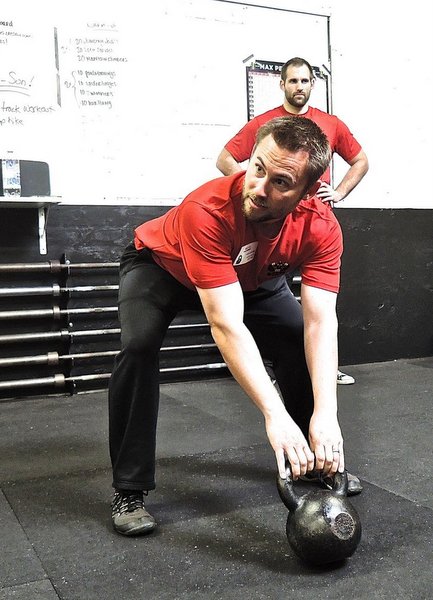
Dragon Door: How are these powerful ideas expressed in your gym?
Seth Munsey: I focus on creating an experience based on Professor Ed Deci’s Self-Determination Theory. It basically means that for someone to find success, they need to have three things: competence, relatedness, and autonomy. If one is missing, then the long term chances of success decrease. For example, if you wanted to play soccer, but no one else was there the first time you went to kick a ball around the soccer field—it might be ok for a little while. But there would be no relatedness, even though you are autonomous, and you wouldn’t know if you were becoming competent. If you were on a team and improving, but no one invited you out for beer afterwards, then you have competence, and autonomy, but there’s no relatedness or community. Similarly, if you’re getting better but then are pressured into going out for beers afterwards then there's competence and community, but no autonomy.
At our gym, Iron Republic, we’ve created a strong community of like-minded people with similar goals. This gives them the best opportunity to thrive. In addition to gym activities, we also go bowling, to film festivals, and stuff like that. We are big on competence, and make sure people feel successful right away with small wins. Our clients also understand that it’s their choice to be here.
I don't force them to do anything that they aren’t comfortable doing. I’ve set up a coaching environment that allows autonomy. If we are doing squats, then they can choose to grab one or two kettlebells, a
sandbag, or whatever they prefer. Just that little bit of choice gives them the feeling of autonomy—they're making the choice to be here and they want to be here.
Dragon Door: That makes perfect sense. I’ve noticed that people will often push themselves harder that way too.
Seth Munsey: That's so true! If I have five exercises on the board like goblet squats,
ring rows, etc. I let them choose where they start, too. Sometimes they start with a favorite, or sometimes they start with what they like least to get it over with. In a general population class, it won’t have that big of an impact on their programming, but letting them make the choice is huge. Our clients often feel controlled at work and home—especially if they have kids. The gym might be the only place where they truly feel autonomous. They chose to show up, and even though we provide a format and coaching, we make sure they have choices. This place is just about showing up, being around good people, moving, and as our tagline says, "Live Life Strong".
Dragon Door: You've mentioned sandbags a couple of times, are you using DVRT training at Iron Republic, too?
Seth Munsey: Yes. In addition to being an
RKC Instructor, I am a DVRT Master Instructor, and an OS instructor. I taught a DVRT Level One certification in San Francisco just a few weeks ago.
DVRT is a great coaching system with excellent variations—and it’s a great client experience. Years ago, I heard Josh Henkin speak at a Perform Better event. He said that even if you had the greatest program in the world, if your clients don’t have a good experience, then they won’t keep showing up. Ultimate Sandbag provides a great physical experience, and a fantastic mental experience as well. We primarily use sandbags and kettlebells at Iron Republic.
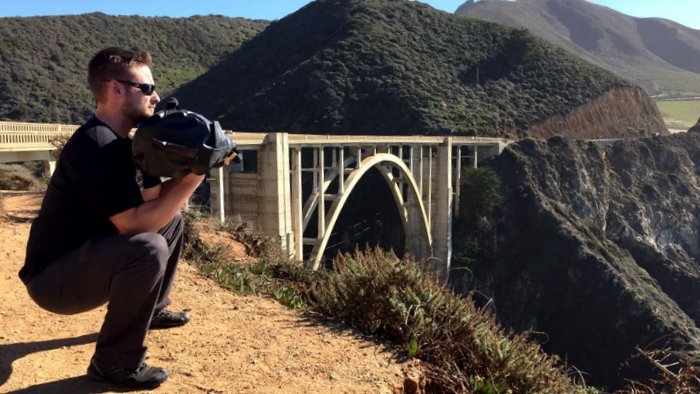
Dragon Door: What's your favorite drill to teach?
Seth Munsey: The basic hip hinge, because I really want to help people move better, and feel better. At first, most people don’t understand that concept. Teaching them the hip hinge allows them to feel successful on the first day—and we might have already helped them stave off future injuries. I also like teaching the Turkish get-up. It's an amazing full body exercise that forces our clients to slow down and learn about body awareness. If someone can get down on the ground and back up just one time a day, then they can increase their chances of living longer. Falls are number-one killers. When I was working on an ambulance, almost half of our calls were from elderly people who had fallen down. The get-up builds the strength, confidence, and the ability to get back up off the ground.
Dragon Door: What's your next big goal?
Seth Munsey: I am working towards the
RKC-II. I’ve wanted to do it for a while, but now I have time to train for it.
I love helping connect people to their passion and their purpose. We all want to be passionate about something, and have a purpose. Many of our clients are not connected to the passion in their personal lives. But, in our training with kettlebells and all the other amazing physical things we teach, we can help people connect to their passion and purpose.
Back